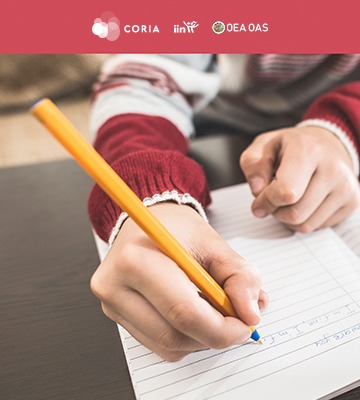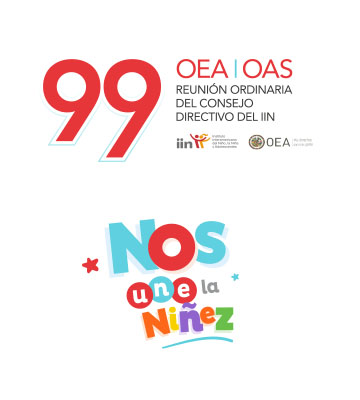IIN-OAS commemorates the International Day to Combat the mistreatment and sexual abuse of children and adolescents – April 25
IIN-OAS commemorates the International Day to Combat the mistreatment and sexual abuse of children and adolescents – April 25
Taking the Convention on the Rights of the Child (1989) as a historical reference, for more than thirty years, States and society have been incorporating the vision of the child as a subject of rights and the eradication of all forms of violence that violates their citizen status. These actions concentrate a large part of the resources in guaranteeing the full enjoyment of these rights and the prohibition of all forms of child and adolescent sexual abuse. However, to date, transgressive forms of bonding, upbringing and education continue to prevail, putting at risk the development, socialization and the reduction of circles of violence.
All actions (or omissions) that threaten the physical and emotional integrity of children and adolescents are considered abuse; a problem that is exercised with greater incidence in the most intimate and close spaces, in contradiction to the need to promote affective attachments and protection in the family, school and community. Poverty is a relevant and general factor of abuse, however, emotional or psychological aggression is more installed, followed by physical punishment and sexual abuse.
The inclusion of social networks and the internet in the socialization processes, add other types of violence or abuse such as: cyberbullying (sending, publishing or sharing negative, harmful, fake, or cruel content about a person), grooming (adults who get in contact with children and adolescents in order to gain their trust and involve them in sexual practices) and sexting (sending personal photos and videos with sexual content through instant messaging or social networks).
The pandemic and quarantine situation has aggravated the incidence of cases of violence and abuse towards children and adolescents in family settings and on social networks. The different socioeconomic tensions, anxiety or frustration and overcrowding are factors that have increased abuse, under the impunity of the private or ‘closed doors’.
Therefore, it is essential to denaturalize violence as a basis for bonding and socialization, and to transform the mechanisms of protection and care of children and adolescents where the identification of them prevails as subjects of rights in the process of development, promoting empathy and assertive communication, and encouraging the construction of limits and responsibilities from dialogue. These practices must be installed from the interpersonal and family levels, transcending towards public settings; but also complementing the efforts of the States to address the multi-causality of the phenomenon of violence in general.
In coordination with the States and civil society and promoting dialogue processes with adolescents committed to their lives and citizens, the Inter-American Children´s Institute (IIN-OAS) develops strategies that seek to improve rights guarantee processes and vindicate the actions of prohibition and full eradication of sexual exploitation, the revictimization of adolescents within the penal systems and all forms of corporal punishment, among the main ones. In this way, it also fulfills global commitments to end abuse, exploitation, trafficking, torture and all forms of violence against children and adolescents (SDG Goals for 2030, 16.2).
The IIN-OAS welcomes the progress made by civil society and the States in promoting the rights of children and adolescents in this area, and calls to articulate efforts and prioritize commitments to eradicate and prevent all forms of violence in any context, to assist registered cases, to attend to groups of children and adolescents who suffer situations of violation such as: child labor, unaccompanied migrants, criminal responsibility, family separation, extreme poverty, etc.
Right to live without violence
Article 19 of the Convention on the Rights of the Child
1. States Parties shall take all appropriate legislative, administrative, social and educational measures to protect the child from all forms of physical or mental violence, injury or abuse, neglect or negligent treatment, maltreatment or exploitation, including sexual abuse, while in the care of parent(s), legal guardian(s) or any other person who has the care of the child.


